I’m always on the hunt for new flavors. This dish definitely hits the mark. Its flavors are bold and exciting. A combination of flavor that I’ve not previously experienced.
The base for the sauce is a kroeung, the Cambodian term for a spice/herb blend. This version includes lemongrass, lime leaves and zest, dried red chiles, shallot, garlic, turmeric, galangal, and ginger, which is not only tasty, but also happens to be a nutritional powerhouse of ingredients.
You can make the kroeung in a food processor or blender, but I don’t mind the mortar and pestle method. It’s both an upper arm workout and therapy session rolled into one.
Had a bad day…pound, pound, pound.
Hate your day job…pound, pound, pound.
Someone pissed you off…pound, pound, pound.
Cheaper than therapy!
This chicken comes from my friends at Truck Patch Farms (New Windsor, Maryland). You could purchase the chicken parts separately, though it will cost more. You can easily break down your own bird in just a few steps. It’s easier than you might think.
Here’s a great step-by-step tutorial on breaking down a whole chicken.
You should have 10 pieces total: 2 legs, 2 thighs, 2 wings (tips discarded), and 4 pieces from the breast (each breast sliced in half cross-wise).
Save the carcass for making stock.
Coconut milk, mixed with the kroeung, lemongrass, and shrimp paste, is the base for this sauce.
The dish is finished with a splash of fish sauce and served hot over rice.
Most ingredients should be fairly easy to track down, with the exception of, perhaps, galangal, lime leaves, and shrimp paste, though all should be readily available at most Asian grocery stores. I highly encourage you to seek out those last few items if at all possible. They provide just the right balance of flavors to this dish.
The good thing is, once you’ve procured the aforementioned items, they will keep for a while. The galangal and lime leaves freeze well, and the shrimp paste, which is fermented, will last a really, really long time (not sure if there is any expiration date on shrimp paste?).
A few words on shrimp paste….
Don’t be alarmed by its pungent nature. Shrimp paste is fermented/salted shrimp. On it’s own, shrimp paste would probably overwhelm your palate. However, when mixed with other ingredients, it adds that quintessential umami quality; that little extra added flavor that just makes the dish what it is.
Chicken Curry with Lemongrass and Lime Leaves
Adapted from Curry Cuisine
serves 4
1 (3 to 3 1/2 pounds) small chicken
3 tablespoons coconut oil
4 to 5 tablespoons red kroeung (recipe below)
1 tablespoon shrimp paste
1 tablespoon Indian curry powder
1 tablespoon sugar (preferably palm or coconut sugar)
4 cups coconut milk
1 stalk of lemongrass, tough outer leaves removed, thinly sliced
6 kaffir lime leaves, bruised
2 to 3 dried red chiles, torn in half
Break down the chicken into ten pieces: 2 legs, 2 thighs, 2 wings (tips discarded), and 4 pieces from the breast (each breast sliced in half cross-wise). See pictures above for guidance.
Heat the coconut oil in a large pan over medium-high heat. Add the chicken pieces, skin side down, and brown, about 10 minutes, turning to color all sides. Set aside.
Add the kroeung and shrimp paste, and stir-fry, breaking up the paste with the back of a wooden spoon, about 2 minutes or until just golden and fragrant. Add the curry powder and sugar, and stir for another minute until fragrant.
Reduce the heat to medium-low. Return the chicken to the pan. Add the coconut milk, lemongrass, kaffir lime leaves, and dried red chiles. Cover and cook, until the chicken is cooked through, about 10-15 minutes. Serve hot with rice.
Red Kroeung
1 stalk lemongrass, tough outer leaves removed, chopped
1 ounce galangal, chopped
1 ounce, ginger, chopped
2 large garlic cloves, chopped
1 large shallot, chopped
grated zest of 1 lime
4 kaffir lime leaves
2 to 4 dried large red chiles (soaked until soft, chopped)
1 ounce turmeric root, chopped or 1/2 teaspoon ground turmeric
Mortar and pestle: Pound all ingredients until it forms a paste.
Food processor or blender: Blend all ingredients, adding water, 1 tablespoon at a time as necessary, until it forms a paste.
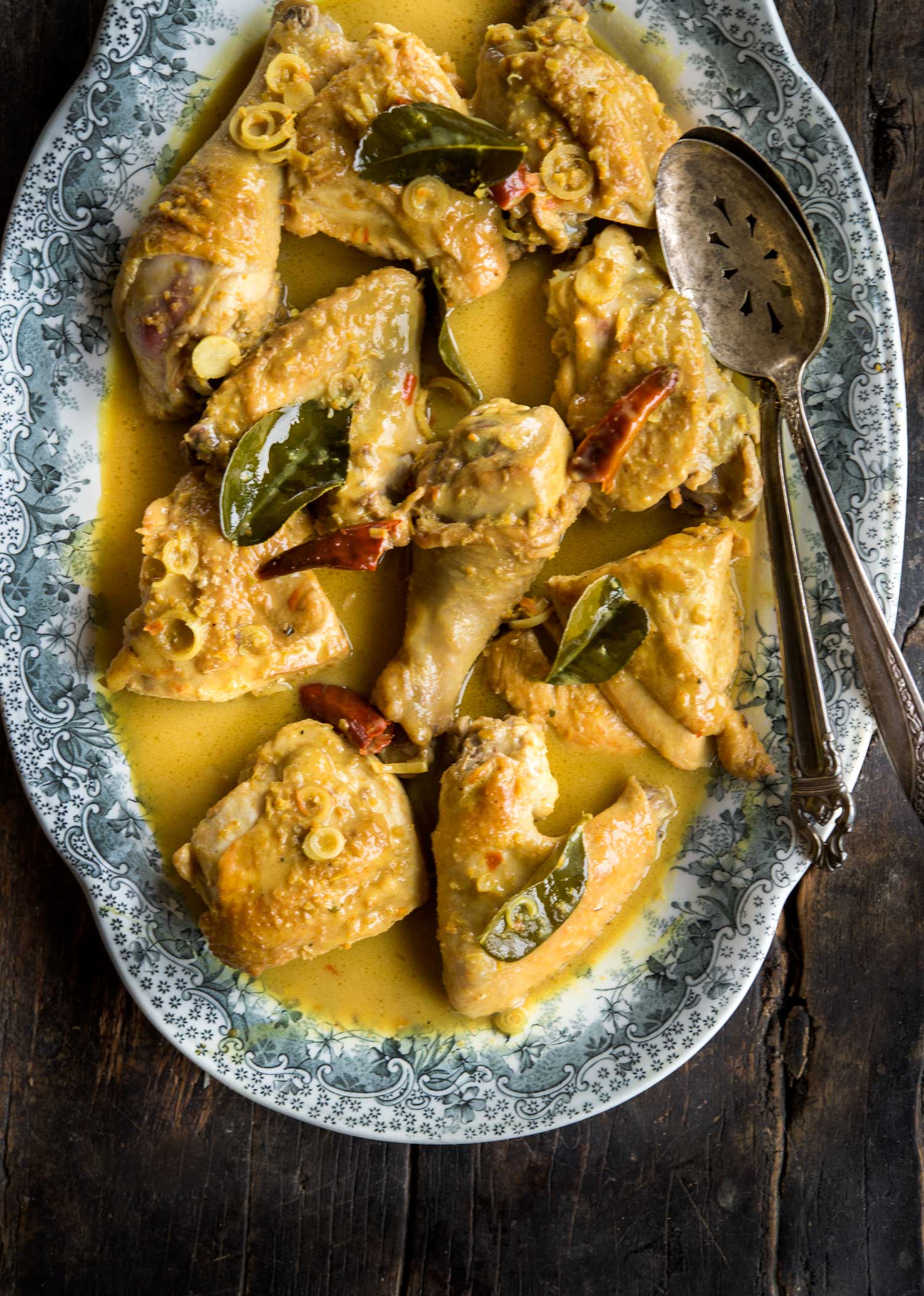






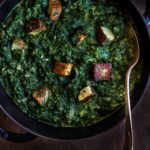
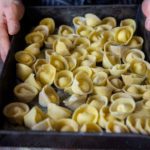
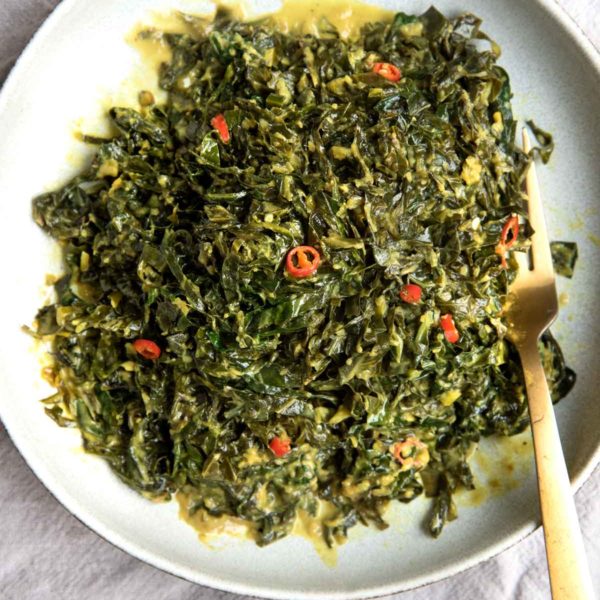
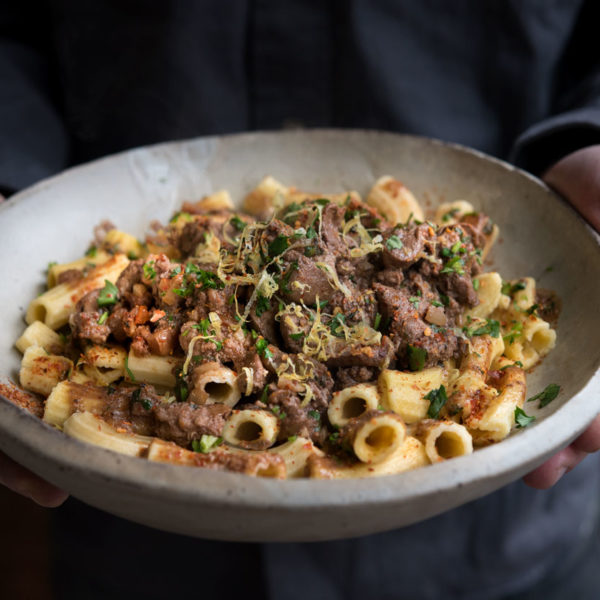
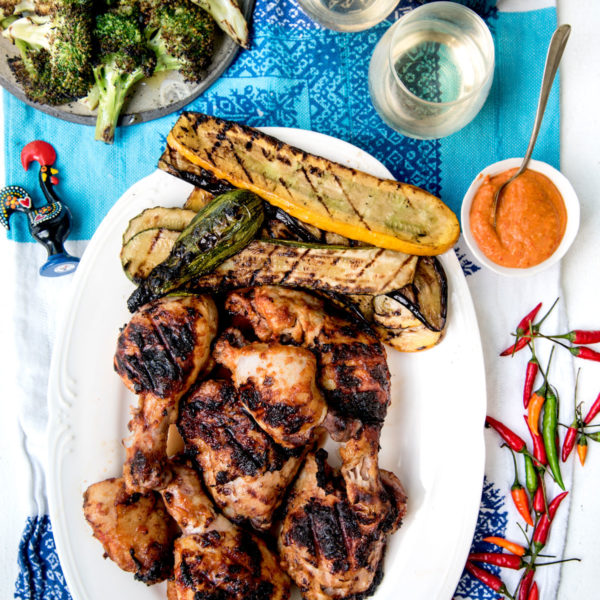


2 comments
Pang @circahappy
You are so right to use mortar and pestle instead of blender as my mother would say that good curry paste should ONLY be done using mortar and pestle 🙂 For some reason, blender/food processor won't get you the aromatic paste you need. And you are also right about it was cheaper than therapy.
This recipe is right up my alley and of course, I really love love love your photos 🙂
Vy Tran
I love chicken curry! So impressed that you made your own curry paste!